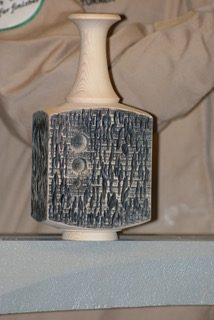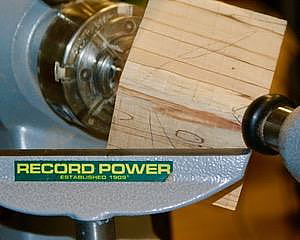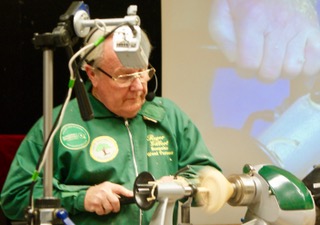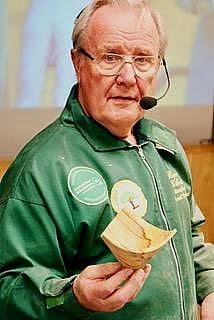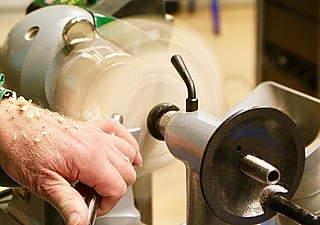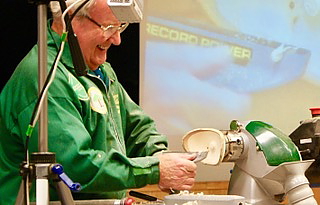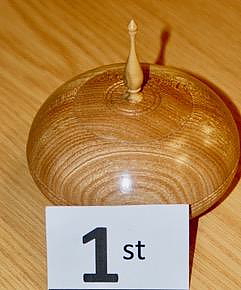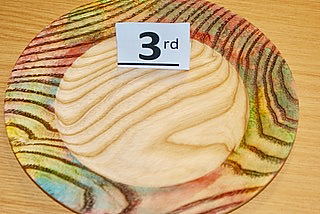The evening was a demonstration by Steve Heeley who introduced the project as a means of utilising square or rectangular offcuts to make a vase for silk flowers which included texturing and colouring.
The rectangular block of pine was mounted between centres as accurately as possible.
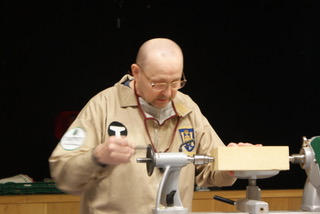
One of the faces had 3 holes drilled for fitting plugs later on. A chucking spigot was turned at the tailstock end using a spindle gouge as a parting tool may damage the square edges. This was then mounted in a chuck with the tailstock brought up for support. The neck and shoulder were turned using a spindle gouge with the final cuts being light and continuous to get the best finish.
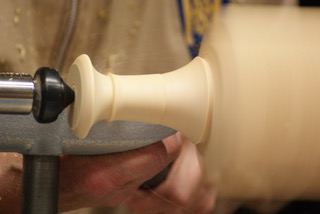
The neck was refined with a skew again to obtain the best finish. The base shoulder was cut in the same way. The hole along the centre of the vase was drilled and the top was blended into the hole.
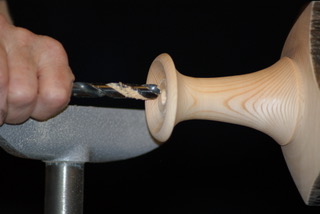
The flat surfaces were then textured quite coarsely and randomly but you could do this in any way you wish. The neck and shoulders were then sprayed with sanding sealer and the flat faces were then sprayed with Chestnut black lacquer.
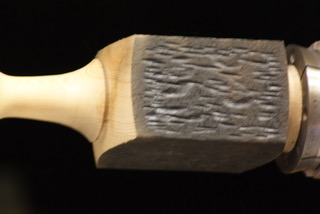
Once this was dry the pommels and neck had a final skim to a fine finish and sanded. The flat faces were lightly sanded to remove the black lacquer from the high spots.
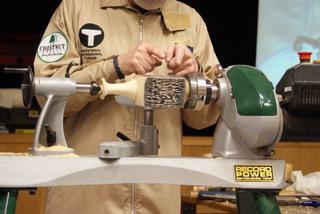
This created a striking finish of black with light wood showing through. The vase was reverse chucked onto a wooden jam chuck with the tailstock to support it. The base pommel was finished and the chucking point turned away.
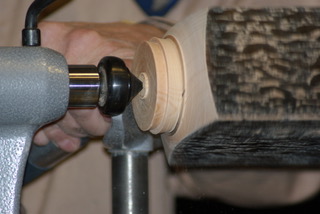
3 plugs were turned and fitted into the 3 holes on the flat face as additional decoration. The vase can be finished to your choice using oil or spray clear lacquer etc. This was a really good way of using up offcuts that would usually end up as firewood and looked very effective as a finished item.
